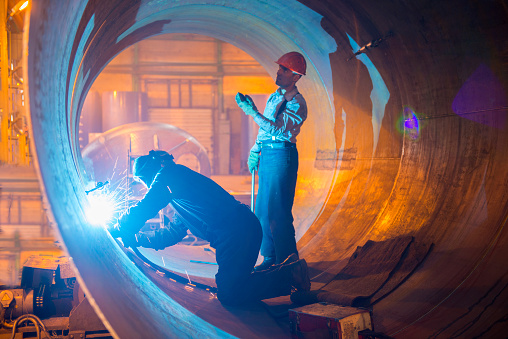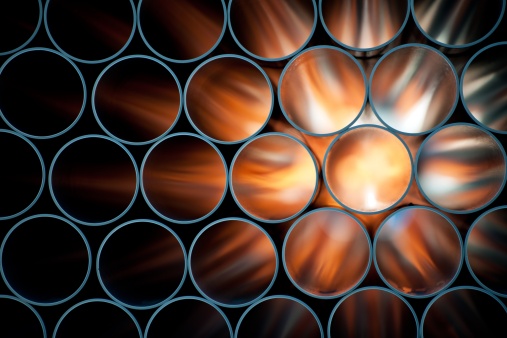Your Questions About Natural Gas, Answered
Natural gas is powering our modern way of life and helping to cut CO2 emissions. Here’s what this energy revolution is all about.
Learn MoreNatural gas is powering our modern way of life and helping to cut CO2 emissions. Here’s what this energy revolution is all about.
Learn MoreWhat you need to know about this critical energy infrastructure

June 3, 2021
When you fill up your tank with gasoline or switch on a light at your home, you’re likely benefiting from America’s 2.8-million-mile pipeline network.
Every day of the year, pipelines safely and efficiently transport oil, petroleum products, natural gas, and natural gas liquids. They connect energy production sites to American businesses, homes and even our crucial trading partners, Canada and Mexico.
Pipelines will play a critical role in the coming years as the world’s population and energy needs increase. In particular, pipelines help reduce greenhouse gas emissions by limiting the number of trucks and trains transporting fuel and by transporting natural gas, a cleaner energy source helping to cut carbon dioxide emissions.
Here’s what you need to know about pipelines:
What is a pipeline?
Pipelines are usually located underground and transport crude oil, refined products and natural gas. Pipelines operate 24 hours a day, seven days a week. Liquids in a pipeline move at an average speed of 25 miles per hour.
They move crude oil from production regions to refineries, where it is turned into automobile and plane fuels, as well as other products. From there, pipelines transport the fuels to terminals, where trucks pick them up and deliver them to customers.

Pipelines also move natural gas from production sites to distribution companies and then directly to homes and businesses, where it is used to power manufacturing, generate electricity and fuel cooking and heating.
Why do energy companies use pipelines to transport natural gas and oil?
Pipelines are the safest, most environmentally friendly way of transporting natural gas and oil. Global leaders, including U.S. Energy Secretary Jennifer Granholm and Canadian Prime Minister Justin Trudeau, have acknowledged that pipelines are the best way to move natural gas and oil.
How do pipelines affect the environment?
In addition to transporting natural gas to power plants – making it possible to reduce coal-fired electricity generation – pipelines also reduce the number of trucks and trains moving fuel across the country and, in turn, cut greenhouse gas emissions. A 2017 study from the National Bureau of Economics found greenhouse gas emissions are nearly halved when delivering energy by pipelines, compared to rail.

The nation’s pipeline network has made it possible for electricity companies to affordably and easily substitute natural gas for coal. In the U.S., the shift to natural gas as the leading source of power generation is responsible for almost two-thirds of the nation’s carbon dioxide emission reductions between 2006-2014.
Are pipelines safe?
Yes. Multiple analyses have concluded pipelines are the safest way to move natural gas and oil for everyday use.
Pipeline operators conduct near-constant inspections of their infrastructure. They rely on cutting-edge technology to proactively identify and address small issues, allowing operators to schedule maintenance long before a problem can develop. Advanced inspection devices, called “smart pigs,” travel inside pipelines looking for any signs of wear and tear. Teams of employees are monitoring pipelines around-the-clock every day of the year, and they can immediately respond to any potential incidents.
Each year, the American Petroleum Institute – in collaboration with the Association of Oil Pipe Lines – releases a report on the industry’s safety record to encourage collaboration across companies to improve safety and identify areas for improvement.
Additionally, pipeline operators work extensively with each other, security experts and government agencies to protect and defend their systems. Pipeline companies are constantly investing in strengthening their cyber infrastructure to avoid and respond to threats.
Where are pipelines located?
The nation’s 2.6 million miles of natural gas pipeline and 225,000 miles of liquid pipeline extend across every state.
Pipeline operators carefully select locations and routes, seeking to avoid areas that are highly populated or environmentally sensitive. Operators also try to use and expand existing utility corridors instead of building brand new ones whenever possible.

Who works on pipelines?
Between 2013 and 2016, infrastructure development, including pipeline construction and maintenance, supported nearly 1.2 million direct, indirect and induced jobs. With adequate investment, infrastructure development will continue to have significant and widespread impacts on the U.S. economy, supporting an average of 800,000 to one million jobs each year through 2035.
Pipeline jobs are often union-affiliated careers with competitive salaries capable of supporting a middle-class income. Roles include welders, pump system operators and valve installers.
How do pipelines affect me?
Energy pipelines ensure that natural gas and oil is reliably delivered to American families and businesses – when consumers need it, it’s there.
Pipelines also help to keep energy costs low. It costs roughly $5 per barrel to transport natural gas and oil via pipeline, compared to $10-15 per barrel by rail and $20 per barrel by truck, according to an analysis by Strata, a non-profit research center. Businesses and families benefit from lower energy costs when they fill up their gas tanks and heat their homes.
What is the single biggest reason for the reduction of carbon dioxide emissions in the United States?
Correct! The U.S. Energy Information Administration reported that from 2005-2019, 65% of the decline in CO2 emissions in the electric power sector was attributable to switching from coal-fired to natural gas-fired electricity generation. Learn more about the power of natural gas.
Good try! The U.S. Energy Information Administration reported that from 2005-2019, 65% of the decline in CO2 emissions in the electric power sector was attributable to the switching from coal-fired to natural gas-fired electricity generation. Learn more.
More From API
Read on for in-depth articles about how we’re securing America’s energy future, our efforts to combat climate change, and more.
New innovations make it possible to produce more energy with fewer emissions Combatting emissions of methane, a potent greenhouse gas, […]
Learn MoreBetween now and 2050, according to the Energy Information Administration, the American demand for electricity will increase 1% each year. To […]
Learn MoreWe’re taking five key steps to reduce greenhouse gas emissions
Learn MoreWe use cookies to offer you a better browsing experience, analyze site traffic, personalize content, and serve targeted advertisements. If you continue to use this site, you consent to the use of cookies. Read more about our Privacy Policy and Terms and Conditions.
accept